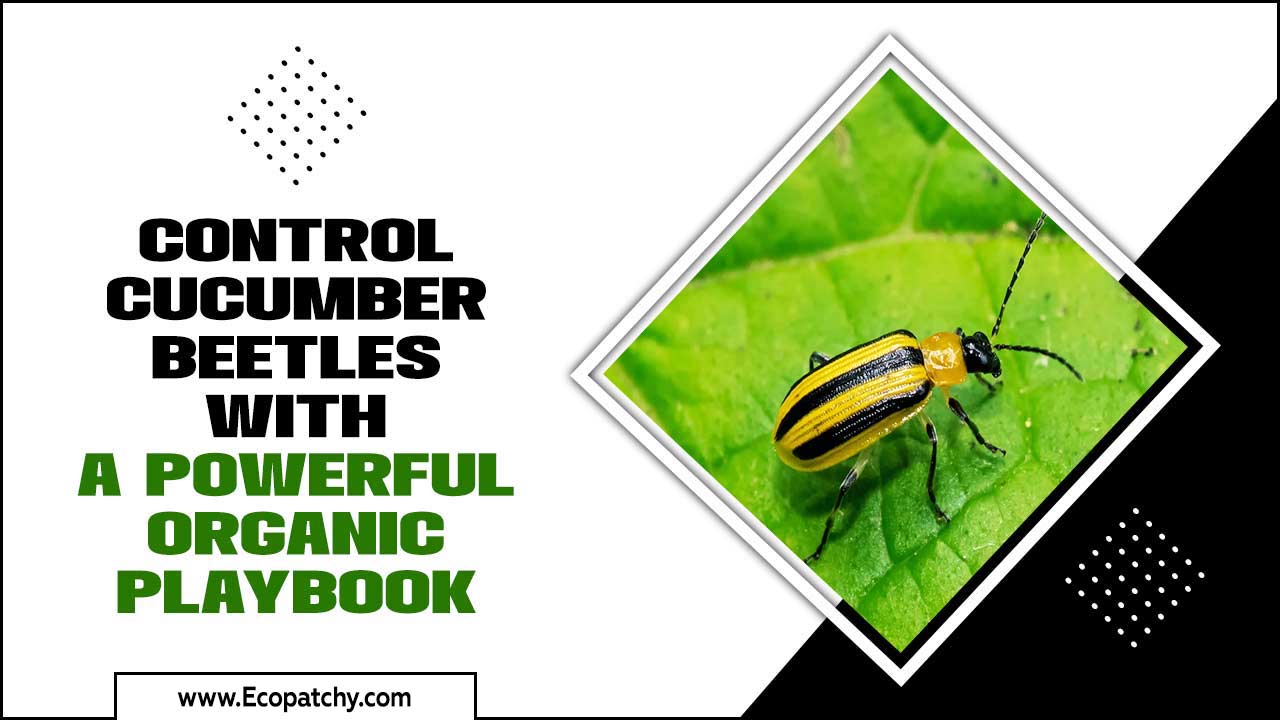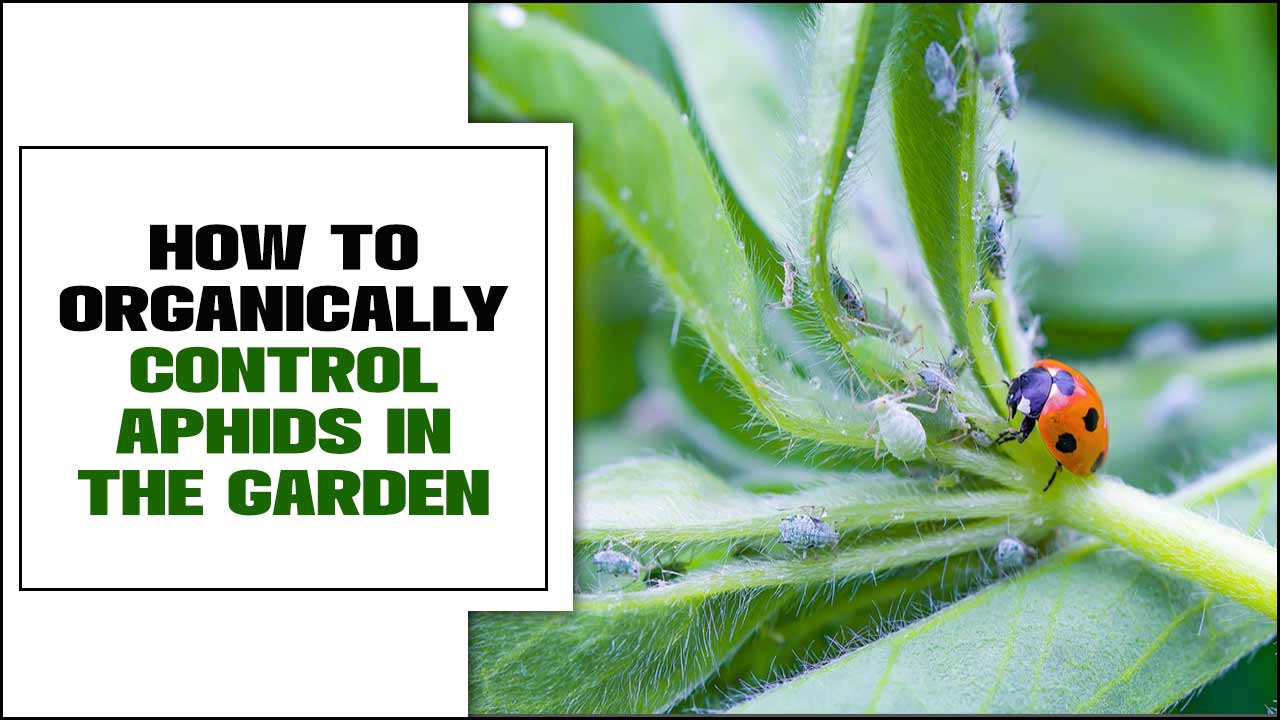Are you tired of seeing your beautiful garden being destroyed by flea beetles? Whether you are a seasoned gardener or just starting, flea beetles can be a menace to your plants.
But don’t worry. We have covered you with organic flea beetle control methods that will help protect your garden without harming the environment. Here, we will cover everything from understanding flea beetles’ biology and behavior to prevention methods such as creating an unfavorable environment for them.
We will also discuss cultural, mechanical, and biological control methods and safe organic insecticides that work effectively. Lastly, we will cover region-specific information about flea beetles and provide troubleshooting tips to address persistent issues. Read on to learn how to keep your garden healthy and thriving.

Understanding Flea Beetles: Biology And Behavior
Understanding the biology and behavior of flea beetles is crucial for organic flea-beetle control. Flea beetles are small, jumping insects that belong to the Chrysomelidae family. They are known for their ability to rapidly reproduce and cause damage to a wide range of plants, particularly those in the Brassicaceae family.
Flea beetles typically feed on leaves, creating small holes and causing significant damage to the foliage. They are most active during warm weather and can quickly infest an entire garden if left unchecked. By understanding their life cycle, feeding habits, and preferred habitats, organic gardeners can implement effective strategies to control flea beetles without relying on harmful chemicals.
Prevention Methods: Creating An Unfavorable Environment For Flea Beetles

To prevent flea beetle infestations in your garden, there are several methods you can employ. Start by removing plant debris and maintaining good garden hygiene to eliminate overwintering sites for these garden pests.
Also, floating row covers can physically exclude flea beetles from reaching vulnerable seedlings. Crop rotation is another effective prevention method, as it disrupts the life cycle of flea beetles. Mulching around plants can also help reduce flea beetle infestations. Finally, consider choosing flea beetle-resistant varieties of vegetables when available to protect your garden further.
5 Methods For Organic Flea Beetle Control
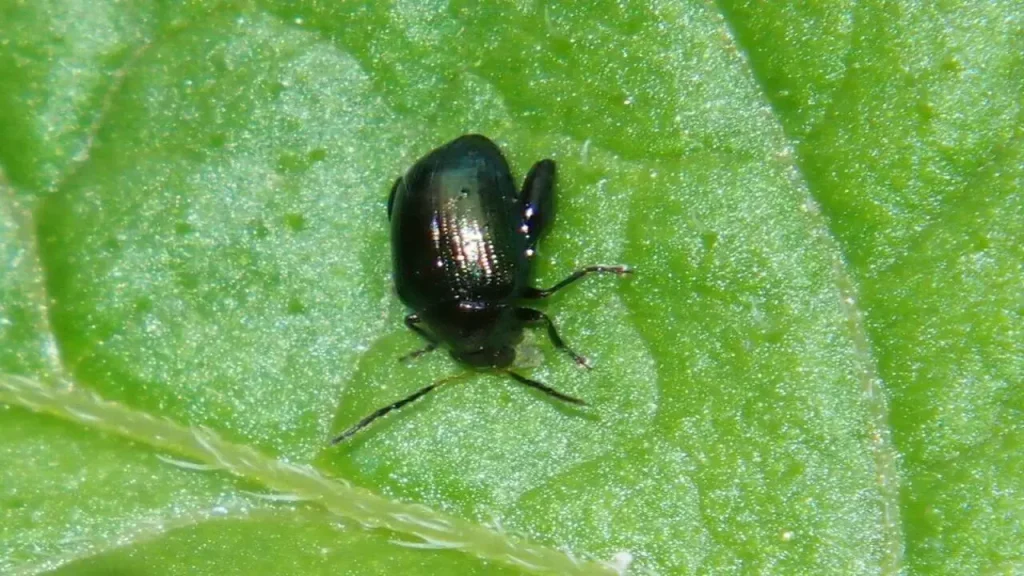
To effectively control flea beetles in an organic garden, there are several methods you can employ. Sticky traps can be used to catch and monitor flea beetles, helping you keep track of their population. Introducing beneficial nematodes can also help control flea beetle numbers by targeting their larvae and pupae. Now, here we will discuss Organic Flea Beetle Control.
1. Cultural Control: Utilizing Crop Rotation And Companion Planting
Crop rotation is an effective cultural control method for preventing flea beetles. By rotating crops each year, you disrupt the life cycle of these garden pests, making it harder for them to establish in the same area. In addition, planting companion plants like mustard or cabbage alongside susceptible crops can help repel flea beetles.
Interplanting with trap crops such as radish or broccoli can divert flea beetles away from the main crops, and avoiding planting susceptible crops near each other can minimize infestations. Implementing a diverse planting scheme promotes natural pest control.
2. Mechanical Control: Physical Barriers And Traps
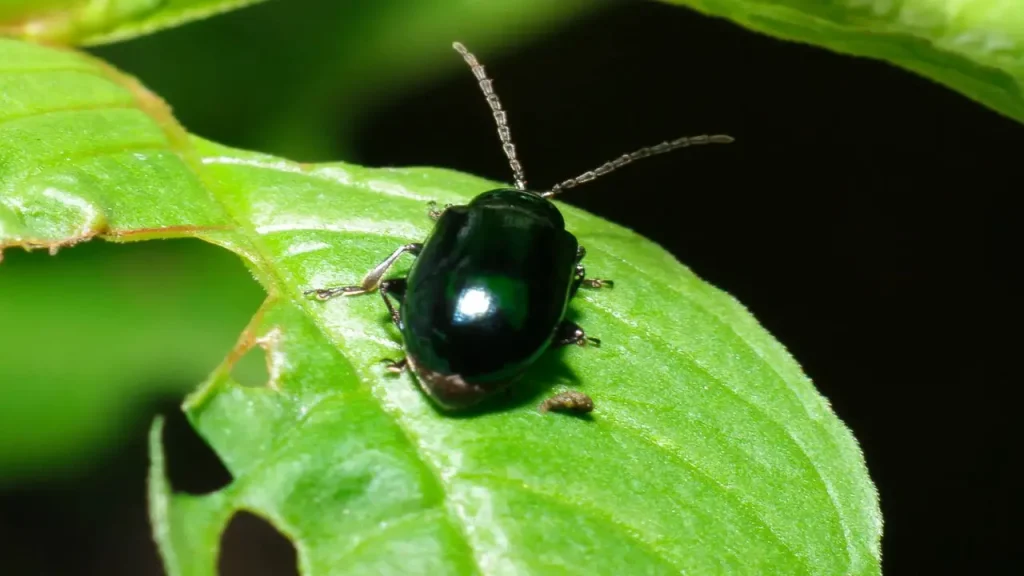
Consider using floating row covers as a physical barrier to protect your plants from flea beetle feeding. These covers create a barrier that prevents flea beetles from accessing your plants. Another option is to place collars or cardboard cylinders around vulnerable seedlings, creating a protective barrier.
For adult flea beetles, strategically placed yellow sticky traps can effectively catch them. Additionally, you can manually remove adult flea beetles from the plants by handpicking them or by shaking the plants over a cloth to collect and dispose of the dislodged beetles.
3. Biological Control: Introducing Natural Predators And Parasitoids
Encouraging beneficial insects like ladybugs and lacewings can be an effective method for organic flea-beetle control. These insects feed on flea beetles and help reduce their garden population. Another approach is introducing parasitic wasps that lay their eggs inside flea beetle larvae, which can help control their numbers.
Attracting toads or other insect-eating animals to the garden is another natural way to control flea beetles. Creating a habitat with diverse plantings can support a healthy population of natural predators while avoiding broad-spectrum insecticides, which is important to protect beneficial insects.
4. Organic Insecticides: Safe And Effective Options For Flea Beetle Control
When organic flea beetle-control, several safe and effective options are available. One option is to use diatomaceous earth, a fine powder that damages the protective outer shells of flea beetles. Organic insecticides like spinosad or pyrethrin can also be sprayed on affected plants to kill flea beetles.
Another option is to apply Beauveria bassiana, a fungus that infects and kills flea beetles. Treating plants with neem oil, a botanical insecticide that repels flea beetles, is also effective. Lastly, using insecticidal soaps can suffocate and kill flea beetles on contact.
5. Integrated Pest Management (IPM) Strategies: Combining Multiple Methods For Maximum Effectiveness
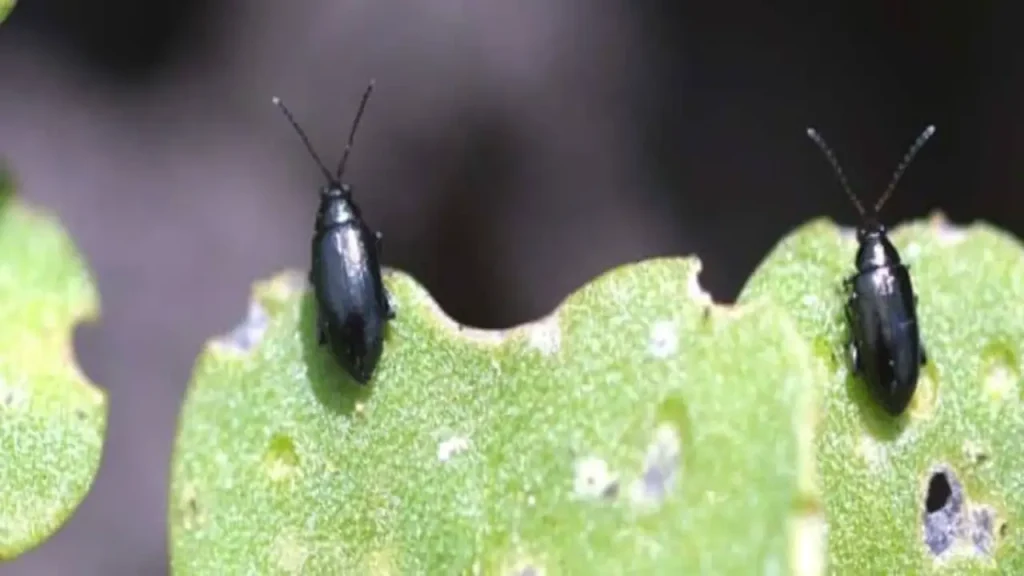
Implementing a combination of prevention, cultural control, mechanical control, biological control, and organic insecticides is key to maximizing the effectiveness of integrated pest management (IPM) strategies for flea beetle control. Regularly monitoring plants for signs of flea beetle infestations allows for prompt action.
Adjusting pest control methods based on the severity of damage is crucial. Maintaining a balance between natural predators, companion plants, and other control methods helps create a resilient ecosystem that can naturally suppress flea beetles. It is also essential to practice sustainable gardening techniques.
Monitoring And Early Detection: Identifying Flea Beetle Infestations
Regularly inspect your plants, especially young leaves, for small holes or feeding damage. Look out for tiny, black beetles with striped backs, as this is typical of flea beetles. To monitor adult flea beetle populations, use yellow sticky traps. Don’t forget to examine the underside of leaves for flea beetle eggs or larvae. Act quickly at the first signs of infestation to prevent further damage.
Troubleshooting And Problem-Solving: Dealing With Persistent Flea Beetle Issues
If you’re dealing with persistent flea beetle issues in your organic garden, don’t fret! You can try several troubleshooting and problem-solving strategies to control these pesky pests. Here are some tips to help you get rid of flea beetles naturally:
- Use Physical Barriers: Covering your plants with floating row covers or fine mesh netting can prevent adult flea beetles from reaching the leaves and laying eggs.
- Practice Crop Rotation: Flea beetles tend to favor certain plants, so rotating your crops yearly can help disrupt their life cycle and reduce infestations.
- Introduce Natural Predators: Beneficial insects like ladybugs, lacewings, and parasitic wasps feed on flea beetles and can help keep their populations in check.
- Apply Organic Insecticides: Products containing neem oil, pyrethrin, or spinosad can effectively control flea beetles when used according to the instructions.
- Maintain Healthy Plants: Strong, healthy plants are less susceptible to flea beetle damage. Make sure your plants are well-watered, properly fertilized, and free from stressors like nutrient deficiencies.
By implementing these strategies and staying vigilant, you can successfully manage flea beetle issues in your organic garden.
Region-Specific Flea Beetle Information
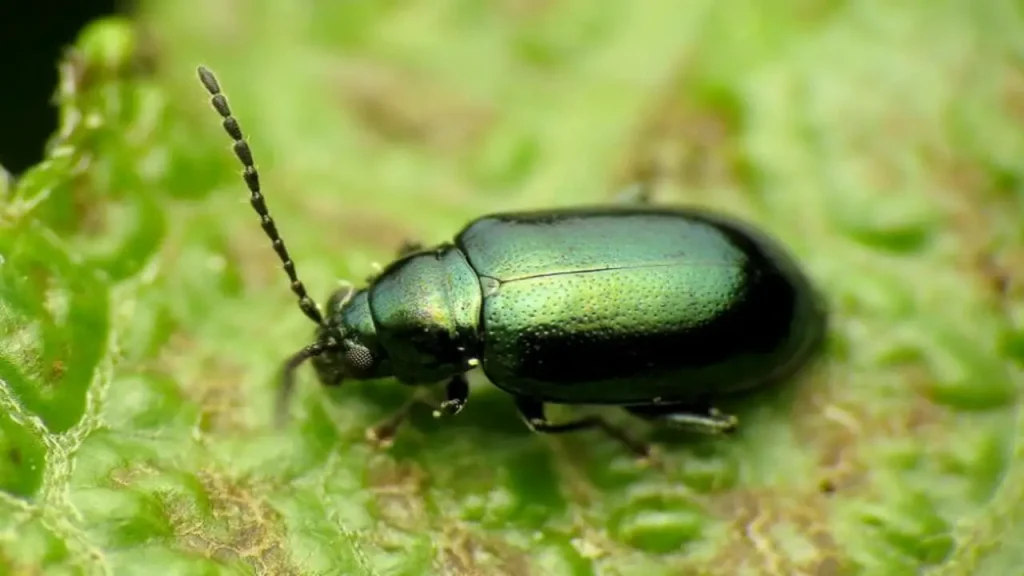
In different regions, there can be various species of flea beetles. Understanding your area’s specific flea beetle species is important as it can help you choose the most effective control methods. You can consult local gardening experts or agricultural extension offices for valuable information on the flea beetles in your region.
You can implement targeted prevention and management strategies by tailoring your pest control approach according to the region-specific flea beetle information. This allows you to protect your garden from these garden pests effectively.
Are There Any Safe Pesticides For Controlling Flea Beetles?
Some safe pesticides for controlling flea beetles in organic gardening include neem oil and diatomaceous earth. Beneficial nematodes can also be used as a biological control method. Sticky traps are effective for monitoring and controlling flea beetle populations. Additionally, trap crops and cultural practices like mulching and crop rotation can help reduce the need for pesticides.
Conclusion
Organic flea beetle control is effective and safe for your garden and the environment. By understanding the biology and behavior of flea beetles, you can implement prevention methods, such as creating an unfavorable environment for them.
Cultural control, such as crop rotation and companion planting, can also help reduce flea beetle populations. Additionally, mechanical control methods like physical barriers and traps and biological control by introducing natural predators and parasitoids can be effective.
Organic insecticides offer safe and effective options for flea beetle control, and integrating multiple methods through integrated pest management (IPM) strategies can maximize effectiveness. Lastly, monitoring and early detection are crucial for identifying flea beetle infestations and troubleshooting persistent issues. Remember, region-specific information and safe pesticide options are available to protect your garden from flea beetles.
Frequently Asked Questions
1.How Do You Get Rid Of Flea Beetles Organically?
Ans: To get rid of flea beetles organically, you can use floating row covers as a physical barrier. Companion planting with herbs like basil and catnip can help repel these pests. Neem oil and diatomaceous earth are effective natural insecticides for flea beetle control. Additionally, practicing crop rotation can prevent infestations in the long term.
2.What Is The Best Flea Beetle Control?
Ans: One effective method for flea beetle control is introducing natural predators like ground beetles and parasitic wasps. Other options include using neem oil, insecticidal soap, and pyrethrin-based sprays as natural remedies. Additionally, crop rotation and intercropping can help reduce flea beetle populations, while row covers can physically prevent their access to plants.
3.Do Flea Beetles Live In Mulch?
Ans: Flea beetles typically do not live in mulch but may use it as a hiding place during the day. These pests are more commonly found on plants and in the soil. To reduce flea beetle populations, removing weeds and practicing crop rotation is important.
4.What Is A Homemade Pesticide For Flea Beetles?
Ans: You can create a homemade pesticide for flea beetles by mixing dish soap and neem oil with water. Another option is to make a solution using garlic, onion, and hot pepper and spray it on the plants. Diatomaceous earth can also be used as a natural pesticide against flea beetles. Always test the homemade pesticide on a small area before applying it to your garden.
5.What Do Flea Beetles Look Like?
Ans: Flea beetles are small, shiny insects that come in black or brown colors. They have enlarged hind legs that enable them to jump like fleas. Some species may have stripes or spots on their bodies. The damage caused by flea beetles includes small holes in leaves and stems and stunted growth in plants.

